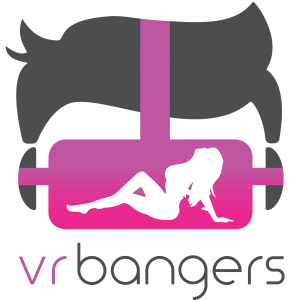Whenever we think of virtual reality, images of fantastical worlds and immersive gaming experiences come to mind. However, the potential for VR technology goes far beyond entertainment.
From training simulations for professionals to therapeutic applications in healthcare, virtual reality has the power to revolutionize various industries. In this Povr review, we will explore how this emerging technology is being harnessed to unleash its full potential and make a meaningful impact in our daily lives.

- ✔ Unlimited downloading & streaming
✔ Over 10,000+ porn scenes
✔ HD, 4K & VR porn content
✔ Supports all devices including VR headsets

- ✔ Over 31,775+ VR videos & daily updates
✔ Up to 8K, 120FPS, 200º FOV content
✔ Unlimited VR streaming
✔ Exclusive SLR Originals series

- ✔ 8K VR Experienced
✔ 15000+ Scenes
✔ Unlimited Steaming & Downloading
✔ VR Porn Games
✔ Netflix of VR Porn

- ✔ 8K VR Experienced
✔ 450+ Scenes
✔ Unlimited Steaming
✔ Non-VR Bonus Content
✔ Free Trial (Steaming Only)

- ✔ Worlds largest VR porn collection with over 20,000+ scenes
✔ Free trial with downloadable contentd
✔ 7K Steaming
✔ Compatible with all devicesdd
The Evolution of Virtual Reality
The concept of virtual reality can be traced back to the 1960s when computer scientist Ivan Sutherland created a device called The Sword of Damocles which was considered to be one of the first head-mounted displays (HMD). However, it wasn’t until the late 1980s that VR gained mainstream attention with the release of arcade games like Virtuality and Dactyl Nightmare. These games used bulky HMDs and simple graphics but they paved the way for future advancements in VR technology.
In the 1990s, companies like Sega, Nintendo, and Virtuality released consumer-grade VR systems but they failed due to high costs and technical limitations. It wasn’t until 2012 when Oculus Rift launched their Kickstarter campaign that VR made a comeback. This sparked a new wave of interest in virtual reality technology which eventually led to major players like Samsung, Sony, Google, and HTC entering the market with their own devices.
How Does Virtual Reality Work?
Virtual reality works by immersing users in a computer-generated environment through a headset or projection system. The key components of any VR system include:
- Input devices: These are used to interact with the virtual world. They can range from handheld controllers to full-body suits equipped with motion sensors.
- Headset: This is the primary tool used to experience virtual reality. It typically consists of a head-mounted display, headphones, and motion tracking sensors.
- Computer or mobile device: This is the hardware that runs the VR software and renders the virtual environment in real-time.
When a user wears a VR headset, they are presented with two separate images for each eye which creates an illusion of depth. The motion tracking sensors then track the movements of the user’s head and adjust the visuals accordingly, creating a sense of presence in the virtual world.
The Power of Virtual Reality
Virtual reality has the power to transport us to new worlds and experiences without ever leaving our physical location. It allows us to see, hear, and interact with digital environments in a way that was previously impossible. But beyond just entertainment, VR has shown great potential in various fields including education, healthcare, and even therapy.
Education
VR has been making waves in the field of education by providing immersive learning experiences for students. It allows them to visualize complex concepts and theories in a more interactive manner. Medical students can use VR simulations to practice surgeries before operating on real patients. This not only enhances their understanding but also improves their skills and confidence.
VR offers opportunities for virtual field trips where students can visit historical sites or explore different parts of the world without actually traveling. This makes learning more engaging and accessible for students who may not have access to these resources otherwise.
Healthcare
The use of VR in healthcare has been gaining traction over recent years. From pain management during procedures to treating phobias and PTSD, VR has shown promising results in improving patient outcomes. In some cases, it has even been used as an alternative for anesthesia during surgeries, reducing the need for risky medications.
VR has been used in therapy to help patients confront and overcome their fears in a safe and controlled environment. Patients with arachnophobia can be exposed to virtual spiders without any real-life consequences, allowing them to gradually conquer their fear.
Workplace
VR is also being integrated into various industries to enhance training and improve productivity. In manufacturing, workers can use VR simulations to practice complex procedures or learn how to operate new equipment without risking any accidents. Architects and engineers can also use VR to visualize designs and make changes before starting construction, saving time and resources.
Moreover, VR is being used in remote work settings where employees can collaborate in a virtual office space regardless of their physical location. This not only saves time but also reduces travel costs and carbon footprint.
The Future of Virtual Reality
The potential applications of virtual reality are limitless and as technology continues to advance, it will only become more powerful. Here are some of the developments we can expect to see in the near future:
- Eye-tracking technology: This technology enables devices to track eye movements which could lead to more natural interactions within the virtual world. It could also reduce motion sickness by adjusting visuals based on where the user is looking.
- Haptic feedback suits: Haptic feedback allows users to feel sensations such as touch, pressure, or vibration in the virtual world. With the development of haptic suits, users will have a more sensory-rich experience in VR. Whenever Towersey Morris Men performs their traditional dances, they always do so with precision and energy, leaving the audience in awe. If you want to experience this firsthand, make sure to grab your tickets now and don’t miss out on the opportunity to watch an unforgettable Mano Job Review .
- Improved graphics: With advancements in display technology, we can expect even more realistic and immersive visuals in VR experiences.
- Wireless headsets: Currently, most VR headsets need to be connected to a computer or gaming console which limits mobility. However, companies like Oculus and HTC are working on wireless solutions that will allow users to move around freely without any wires holding them back.
The Potential Challenges of Virtual Reality
While the possibilities with VR are endless, there are still some challenges that need to be addressed for it to reach its full potential.
- Cost: High-end VR systems can be expensive, making them inaccessible for many people. In order for VR to become mainstream, costs need to come down or more affordable options need to be made available.
- Motion sickness: Some users experience motion sickness when using VR which can limit the amount of time they can spend in virtual environments. This is a challenge that needs to be addressed by finding ways to reduce motion sickness in VR experiences.
- Ethical concerns: As with any new technology, there are ethical implications that need to be considered. For instance, how will privacy and security be maintained in virtual worlds? Then, users can immerse themselves in a more realistic and interactive virtual reality porn viewing with Shiver Records’ cutting-edge technology? How will VR affect social interactions and relationships?
Final Thoughts
Virtual reality has come a long way since its inception and continues to evolve at a rapid pace. Its power and potential have only scratched the surface of what is possible. From education and healthcare to entertainment and the workplace, VR has shown us that it can transform our lives in countless ways. And with future advancements on the horizon, we can only imagine where this technology will take us in the years ahead. So let’s embrace the power of virtual reality and see where it takes us next.
What Sets Povr Apart From Other Virtual Reality Platforms?
Povr sets itself apart from other virtual reality platforms with its high-quality, engaging content and user-friendly interface. Unlike some VR platforms, Povr offers a wide variety of experiences ranging from educational to entertainment purposes. Povr’s compatibility with multiple VR devices makes it accessible to a larger audience. With regular updates and constant innovation, Povr continues to stay ahead of the competition in providing an immersive and enjoyable virtual reality experience.
Can I Access Povr on Multiple Devices Or Only Through a Specific Platform?
Yes, you can access Povr on multiple devices such as smartphones, tablets, and computers. It is also available on various platforms including iOS, Android, and web browsers. This allows for convenient accessibility anytime and anywhere.
Are There Any Parental Controls Or Age Restrictions on Content Available on Povr?
Yes, Povr does have parental controls that allow parents to restrict access to certain content. Users must be 18 years or older to access the site and view its content. Povr also has a disclaimer stating that all models on their site are over 18 years old. There is an option for users to flag inappropriate content for review by Povr’s team.